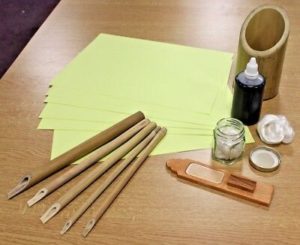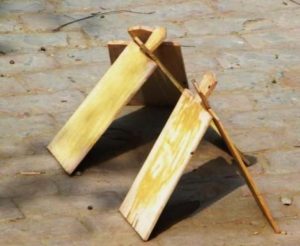Coronavirus, In-house isolation continues.

By Santram Bajaj
As a result of this indoor isolation or lockdown, our physical movements are further curtailed. We may be now feeling mentally drained too by the deluge on Coronavirus news.
Let us not be disheartened. We must keep our minds active and always alert. Our body may not, but our mind can travel and travel at a speed faster than the light.
I am at my single-teacher primary school with 30 other children. Standing with folded hands, I visualise myself singing in chorus with others, our school prayer, – ”˜Hey Gobind Hey Gopal, Hey Dayal Lal ji’. And then to the classroom. I clearly can remember my classroom, Masterji at the desk and his baint (stick) resting at the corner of the blackboard. A reminder to us all if we do not behave, that is.

I find myself sitting on a jute-mat on the floor of a room with 30 other kids. I am ready with a ”˜takhti’- a wooden tablet with a cut out handle on the side. This takhti, I have prepared the day before, by washing it with water and then coating it with ”˜gaachi’(multani mitti), a special soft clay and then drying it by swinging in the air. I have my writing pen and ink-pot ready too. The pen was specially made by me from a soft bamboo like stick, called ”˜kaana’ and its nib or tip is crafted with utmost care, like an artist’s paint brush. The ink-pot, called ”˜dawaat’ is a small earthen-pot, which is filled with specially prepared ink from a powdered stuff, mixed with water and a piece of cloth inserted to control any spillage.


The teacher is dictating and all of us, kids writing. The teacher will be checking our written ”˜imla’ (dictation) for spellings and handwriting.
Then it is arithmetic sums to do. This time another writing tool, called ”˜slate’- a smaller version of takhti, but made from real slate or tin covered with black paint, with wooden frame, is used. The writing pen is also different ”“ a chalk stick ”“ a bit harder than the blackboard chalk. No ink is required. Its writing can be instantly wiped with a piece of cloth, paper or hand.
This ”˜paperless technology’ of those days, of course left no records or notes to refer.
At the end of the day, we all wash our ”˜takhties’, paint them with soaked multani mitti while singing rhymes to dry them, swinging them this way that way in the air, and have them ready for the next day. Before we are allowed to go home, we stand in a line and we recite multiplication tables in Hindi, loudly ”¦ “Ek dooni dooni, do dooni chaar.”(one times two is two, two times two is four”¦ we used to call tables ‘pahade’). We can go up to not just 2, 3…7, 8… but all the way up to 20. Not only that we sing like parrots multiplication of ”˜one and a half’ and ”˜two and a half’ times’ tables, it was all learning by rote in those days. Nahin to Masterji ki ‘Baint’ (cane) is ready!
Imagine, doing that today! We look for the calculator even to multiply 12 by 12.

At times after school the ”˜Takhti’ served the purpose of a cricket bat with cricket being played on the street, or used as a weapon to settle street fights among us kids. But I must say it was a must educational tool in those days without which we were at a loss, sometimes sent by Masterji (teacher) at the back of the class for having forgotten to bring the Takhti to school.
I am sure, by now your brain is in top gear, having jogged your memory of those happy days.
Stay home, stay safe!
Good luck!!
Short URL: https://indiandownunder.com.au/?p=15061
